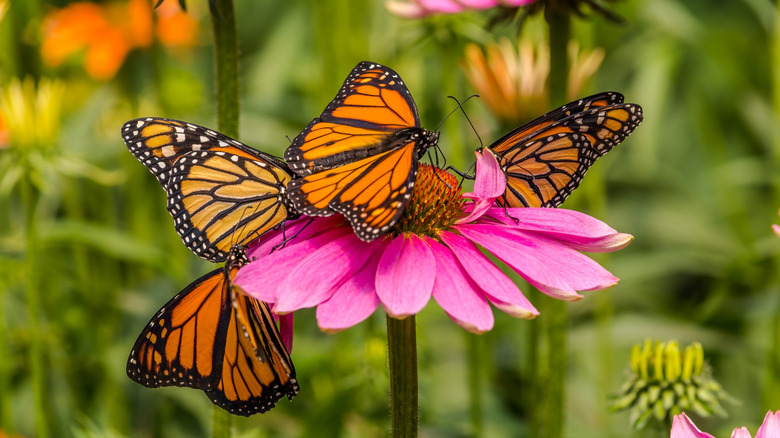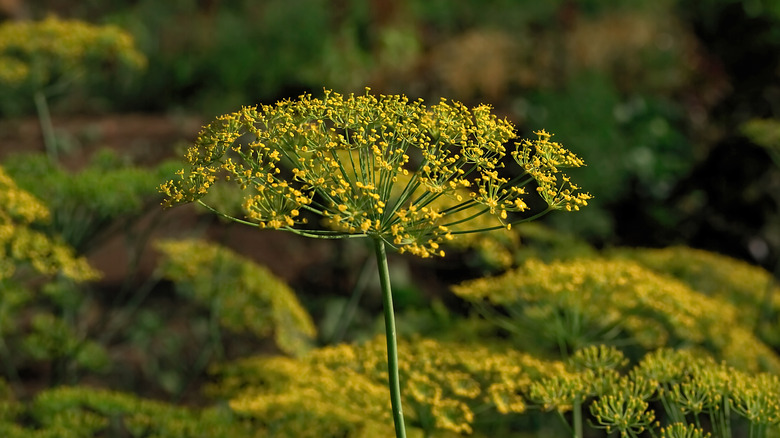Bring Butterflies Fluttering To Your Garden With An Herb You Can Grow Yourself
Butterflies are disappearing at an alarming rate. According to the National Wildlife Federation, 17% of the 800 butterfly species found in the U.S. now faces the threat of extinction, likely due to habitat loss, pesticides, and rapid development. The number may be even higher than that. As native meadows give way to pavement and lawn, pollinators lose the very plants they rely on to survive. But by planting even a small patch of the right herbs, you can help restore what's being lost.
The dill herb is one of the easiest ways to support butterfly populations at home. While it's best known as a kitchen staple for soups, fish, and pickling, dill also serves as a host plant for the eastern black swallowtail. Adult butterflies lay their eggs on dill, and once the caterpillars hatch, they rely on its leaves as their only food source. Without access to these specific host plants, most caterpillars won't survive.
Dill is as beautiful as it is beneficial. Its soft, light, ornamental leaves and delicate yellow blooms add gentle movement and color to any garden bed. Butterflies are drawn to its flowers for nectar, making it both a visual highlight and an active part of a thriving pollinator habitat. Plus, dill is low-maintenance, fast-growing, and perfect for gardeners of all experience levels.
Avoid planting these vegetables if you're growing dill
Dill may be a favorite among pollinators, but it doesn't always play nicely with others in the garden. To keep your raised vegetable bed healthy and productive, it's best to avoid planting dill alongside certain vegetables that compete for nutrients, attract shared pests, or interfere with growth. Avoid other members of the Apiaceae family, for instance. While it might seem logical to group dill with its relatives like carrots, cilantro, and fennel, that can lead to problems. These plants tend to attract the same pests, increasing the chances of infestation.
Some, like dill and fennel, can also cross-pollinate, which may result in weak or bitter plants down the line. Giving each their own space reduces the risk of pest buildup and preserves the flavor you planted them for. You'll also want to keep dill away from tomatoes and other nightshades. Young dill can benefit tomatoes by deterring pests, but once the herb matures, it releases compounds that may stunt tomato growth. The same goes if you plan to plant peppers and eggplants, which belong to the same Solanaceae family and often compete with dill for key nutrients like phosphorus.
As long as you keep these tips in mind, however, you can easily grow dill in most types of soil in USDA Hardiness Zones 2 through 11. Give it full sun and water it regularly — and for pollinator benefits, be sure to let the dill flower if you're used to snipping off leaves for culinary reasons. With host plants like dill and nectar-rich flowers, your yard can highlight the benefits of butterfly gardens by supporting pollinators through every stage of life.

